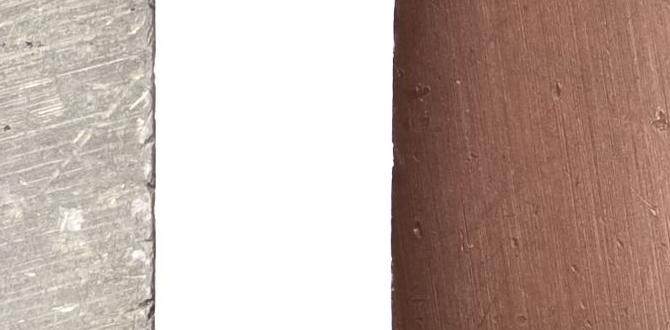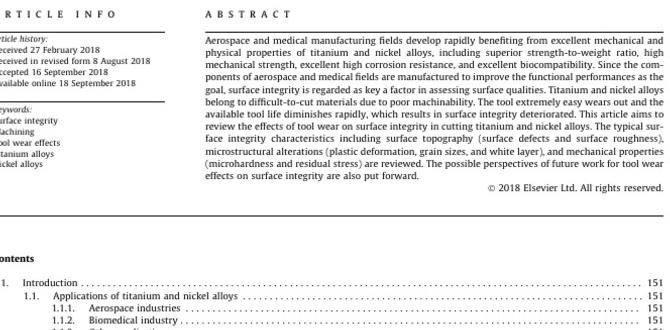Quick Summary: For wood, a face mill is ideal for removing large amounts of material quickly and smoothing large surfaces. A fly cutter is better for precise, shallow surfacing and creating a glass-smooth finish on smaller areas, offering greater control for delicate work. Choose based on your project’s material removal needs and desired surface finish.
Hey there, workshop buddies! Daniel Bates here from Lathe Hub. Ever stood in front of your milling machine, staring at a chunky piece of wood, and wondered which tool is the right one for flattening that surface? It’s a common question, especially when you’re just getting the hang of milling. The difference between a face mill and a fly cutter can seem small, but it makes a big impact on your work. Don’t worry, though! We’re going to break down exactly what each tool does, when to use it, and how to get the most out of them. By the end of this guide, you’ll know which cutter to reach for, every single time.
Face Mill vs Fly Cutter for Wood: Unpacking the Tools
When you’re working with wood on a milling machine, the goal is often to create flat, smooth surfaces. This is called “face milling.” You might also hear it referred to as “surfacing.” Two key tools for this job are the face mill and the fly cutter. While they both sound like they do similar things, they operate quite differently and are best suited for different tasks. Let’s take a closer look.
What is a Face Mill?
A face mill is a robust cutting tool designed for heavy-duty material removal. Think of it as a wide, multi-toothed wheel. It typically has several cutting inserts or teeth mounted around its perimeter and sometimes on its face. These teeth engage the material sequentially, meaning as the cutter rotates, different teeth bite into the wood one after another. This design allows for a very efficient removal of material over a wide area.
The cutting action of a face mill is quite aggressive. Because multiple teeth are working at once, it can hog out material quickly. This makes it perfect for roughing out large surfaces, removing significant amounts of wood, or preparing a workpiece that is significantly out of flat. When you need to speed things up and don’t mind a slightly rougher initial finish (which you’d likely sand anyway), a face mill is your go-to.
Key characteristics of a face mill include:
- Multiple cutting edges (inserts or teeth).
- Wide cutting diameter.
- Designed for efficient material removal.
- Can handle heavier cuts.
- Often used for initial surfacing or flattening.
Safety is paramount when using any cutting tool. Always ensure your workpiece is securely clamped, and wear appropriate personal protective equipment (PPE) such as safety glasses. For wood milling, dust collection is also extremely important. A good dust collection system will not only keep your workspace clean but also significantly improve air quality. Check out resources like the OSHA standards for power tools to understand general safety requirements.
What is a Fly Cutter?
A fly cutter, on the other hand, is a much simpler tool. It’s essentially a single-point cutting tool that sweeps across the workpiece. Imagine a single sharp blade mounted on an arm that rotates around a central point. As the fly cutter spins, this single blade gradually shaves off the material. This single-point cutting action is much more delicate than that of a face mill.
Fly cutters are excellent for achieving a very fine, smooth finish. Because only one tooth is cutting at a time, it can take very shallow passes. This controlled shaving action leaves a surface that is often described as “glass-smooth.” They are ideal for final surfacing, light material removal, or when working with materials that are more delicate or require a high-quality finish directly off the machine, minimizing the need for extensive sanding.
Key characteristics of a fly cutter include:
- A single cutting edge (a tool bit).
- Adjustable cutting radius.
- Designed for precision and fine finishes.
- Takes shallow, controlled passes.
- Ideal for final surfacing or delicate materials.
Using a fly cutter often involves a bit more finesse in setting the depth of cut. Too deep, and you risk overloading the single cutting edge or causing chatter. Too shallow, and it might not remove any material. It’s all about that sweet spot for a clean cut.
When to Use a Face Mill
So, when is the face mill the champion of your milling arsenal? Think big, rough jobs. If you’ve got a warped wooden panel, a large tabletop that needs flattening, or you need to remove a substantial amount of material from a face quickly, the face mill is your best friend.
Applications for Face Mills:
- Flattening Large Workpieces: This is the primary job for many woodworkers using face mills. If your stock is cupped or twisted, a face mill can rapidly bring it back to a uniform flatness.
- Rough Material Removal: Need to quickly reduce the thickness of a board or remove a significant amount of material for a specific shape? A face mill will get you there much faster than a fly cutter.
- Preparing Surfaces for Glue-Ups: For large panels that will be glued together, creating a perfectly flat mating surface is crucial. A face mill can do this efficiently before the final sanding.
- Breaking Down Rough Stock: If you’re starting with very rough lumber and need to get it closer to a usable dimension, face milling is a great first step.
Example Scenario: Imagine you have a thick slab of walnut for a coffee table. It’s warped and has some rough saw marks. You mount this slab on your milling machine. First, you’d likely use a face mill with a relatively shallow depth of cut, taking passes across the entire surface. You might need several passes, flipping the board and repeating the process to ensure both sides are parallel and flat. This is where the face mill shines – tackling that initial, challenging material removal.
Pro Tip: When using a face mill on wood, it’s often beneficial to take slightly shallower cuts than you might with metal. Wood can be prone to tear-out, especially with harder woods or if your tooling isn’t perfectly sharp. Listen to the machine and the wood; back off if you hear excessive chattering or see splintering.
When to Use a Fly Cutter
The fly cutter steps in when precision and finish are the main game. If you need a super smooth surface, or you’re working with a piece that doesn’t require a lot of material removal, the fly cutter is the precise instrument for the job.
Applications for Fly Cutters:
- Achieving a Glass-Smooth Finish: If your goal is a surface that requires minimal sanding, the fly cutter, with its single-point cutting action, can leave an incredibly smooth finish.
- Precise Surfacing: For components that need to fit together with tight tolerances, a fly cutter allows for very fine adjustments to achieve exact dimensions.
- Finishing Passes: After using a face mill or another roughing tool, a fly cutter can be used for a final, light pass to achieve that pristine surface.
- Working with Delicate or Expensive Woods: When you’re working with beautiful, but potentially brittle or very expensive, hardwoods, the controlled, light touch of a fly cutter is often preferred.
- Creating Shallow Recesses: While not its primary use, a fly cutter can be used to create shallow, flat-bottomed recesses in wood.
Example Scenario: Let’s say you’ve already flattened your walnut slab with a face mill. Now, you want that perfect tabletop finish. You might switch to a fly cutter. Mount a sharp, high-quality bit. Set the depth of cut extremely shallow—perhaps just a few thousandths of an inch. Make a pass over the entire surface. The single blade shaves away a tiny layer, leaving a polished look that needs very little sanding. This is where the fly cutter’s precision really pays off.
Pro Tip: The quality of the cutting bit in your fly cutter is crucial. For wood, a sharp, appropriately ground bit will make a world of difference. Often, you’ll use standard lathe bits or specific fly cutter bits designed for wood. Ensure it’s held very securely.
Face Mill vs Fly Cutter: Key Differences Summarized
To help solidify the decision-making process, let’s put the key differences side-by-side. This can be a quick reference when you’re in the shop.
| Feature | Face Mill | Fly Cutter |
|---|---|---|
| Cutting Edges | Multiple (inserts or teeth) | Single (tool bit) |
| Material Removal Rate | High | Low to Moderate |
| Surface Finish | Rougher (requires more sanding) | Very Smooth (often requires minimal sanding) |
| Tooling Cost | Higher initial cost (tool body + inserts) | Lower initial cost (simple body + bit) |
| Complexity | More complex (multiple cutting points) | Simpler (single cutting point) |
| Best For | Rapid material removal, flattening large rough stock. | Precision surfacing, achieving fine finishes, delicate work. |
| Control | Less precise for fine finishing. | High precision for finishing. |
Choosing between them isn’t about which tool is “better” overall, but which one is “better” for the specific job you’re trying to accomplish. Think of it like using a power planer versus a hand plane – both flatten wood, but they have different speeds, finishes, and levels of control.
Setting Up and Using Each Tool Safely
Proper setup and safe operation are critical for both face mills and fly cutters. Even simple tools can be dangerous if not handled with respect and care. Always refer to your milling machine’s manual for specific operating procedures.
Setting Up and Using a Face Mill:
- Mount the Face Mill: Securely attach the face mill to your milling machine’s spindle. Ensure it’s seated correctly and tightened according to the manufacturer’s recommendations.
- Secure the Workpiece: Clamp your wood workpiece firmly to the milling table. Make sure there are no gaps or opportunities for the wood to shift during machining. Use sturdy clamps and consider sacrificial wood under the clamps to prevent marring your workpiece.
- Set the Depth of Cut: Start with a shallow depth of cut. For wood, especially softer woods, 0.020 to 0.060 inches (0.5 to 1.5 mm) is often a good starting point. For harder woods or larger machines, you might be able to go deeper, but always err on the side of caution.
- Engage the Spindle: Start the spindle at a speed appropriate for wood. Consult your machine’s manual or online resources for recommended spindle speeds for face milling wood. Too fast can cause scorching, too slow can lead to tear-out.
- Make the Pass: Engage the feed rate. Let the machine do the work. Move the face mill across the surface of the wood. If you’re flattening a larger area, you’ll need to reposition the workpiece or the cutter to cover the entire surface.
- Check and Repeat: After the pass, check the surface for flatness and finish. If needed, adjust the depth of cut slightly and make subsequent passes.
Setting Up and Using a Fly Cutter:
- Install the Cutting Bit: Mount the fly cutter body into the milling machine’s spindle. Insert the cutting bit into the fly cutter body. Ensure the bit is sharp and securely tightened. If your fly cutter has an adjustable arm, set the cutting radius.
- Secure the Workpiece: Just like with the face mill, clamp your workpiece down very securely.
- Set the Depth of Cut: This is where precision is key. For a fly cutter, extremely shallow cuts are often best, sometimes just a few thousandths of an inch (0.001 to 0.005 inches or 0.025 to 0.125 mm). The goal is to shave, not to remove material aggressively.
- Engage the Spindle: Set the spindle speed. Fly cutters often perform well at moderate to higher speeds for wood, but it depends on the sharpness of the bit and the wood type.
- Make the Pass: Engage the feed. Move the fly cutter across the surface. Because it’s a single point, you need to ensure it covers the entire area you want to finish. Gentle, consistent feed is important.
- Evaluate and Adjust: Check the finish. If it’s not smooth enough, you can take another very shallow pass. If you need to remove more material, you may have to increase the depth of cut slightly or make multiple passes incrementally.
A good resource for understanding more about cutting tools and speeds for various materials, including wood, can be found through resources like Machinery Lubricants, which often covers best practices that translate to machining operations.
Factors to Consider When Choosing
Deciding between a face mill and a fly cutter isn’t always black and white. Several factors can influence your choice:
1. Material Removal Needs:
This is the biggest factor. If you need to remove a lot of material quickly, a face mill is the obvious choice. If you only need to skim a thin layer, a fly cutter is more suitable.
2. Desired Surface Finish:
For a very smooth, ready-to-finish surface, the fly cutter is generally superior. If you’re planning on extensive sanding or are using a very coarse finishing method anyway, the initial finish from a face mill might be acceptable.
3. Workpiece Size and Stability:
Large, warped pieces benefit from the efficiency of a face mill. Smaller, delicate pieces or those that are already quite flat might be better handled by the precision of a fly cutter.
4. Tooling Availability and Cost:
Face mills can be a significant investment, especially with the cost of inserts. Entry-level fly cutters are generally much cheaper. Consider what you already have and your budget.
5. Machine Capabilities:
Some smaller milling machines might struggle with the torque required for aggressive face milling. Similarly, ensuring your machine can maintain a consistent feed rate for a fly cutter is important.
6. Type of Wood:
Hardwoods can be more challenging. Very dense hardwoods might require slower speeds and shallower cuts for both tools. Softwoods are generally easier to mill but can have issues with tear-out, which sharp tooling and appropriate cuts address.
Here’s a quick comparison table to help visualize these factors:
| Factor | Favors Face Mill | Favors Fly Cutter |
|---|---|---|
| Material Removal | High volume needed | Low volume needed |
| Finish Requirement | Rough finish acceptable / extensive sanding planned | Smooth, ready-to-finish surface required |
| Workpiece Condition | Significantly warped, out of flat | Mostly flat, minor adjustments needed |
| Budget | Larger initial tool investment available | Smaller tool investment preferred |
| Time Constraint | Speed is critical | Precision and quality over speed |
| Wood Type | Standard lumber, less concern for pristine surface | Exotic, expensive, or delicate woods |
Maintaining Your Milling Cutters for Wood
Just like any tool, your face mills and fly cutters will perform better and last longer with proper maintenance. For wood, the primary concerns are keeping cutting edges sharp and preventing buildup.
Sharpening:
For face mills with inserts, this means replacing worn or chipped inserts. For fly cutters, it means sharpening the single bit. Use a sharpening stone or a grinding wheel suitable for the bit material. For carbide bits, use diamond abrasives.
Cleaning:
Wood dust and pitch can build up






